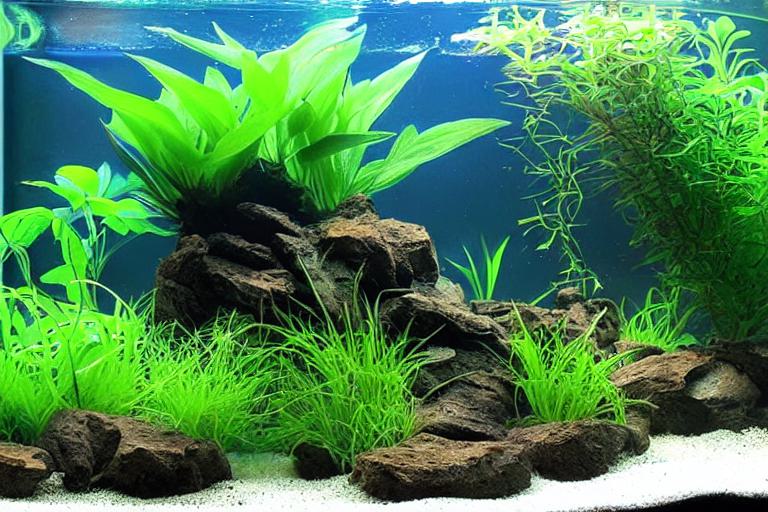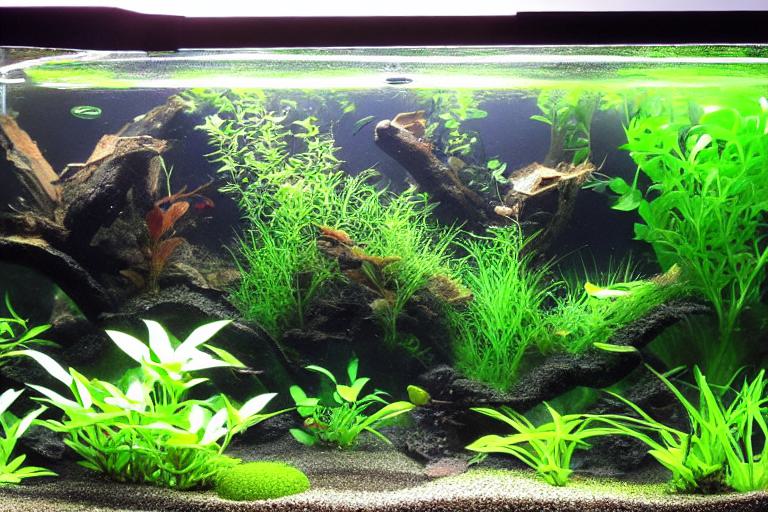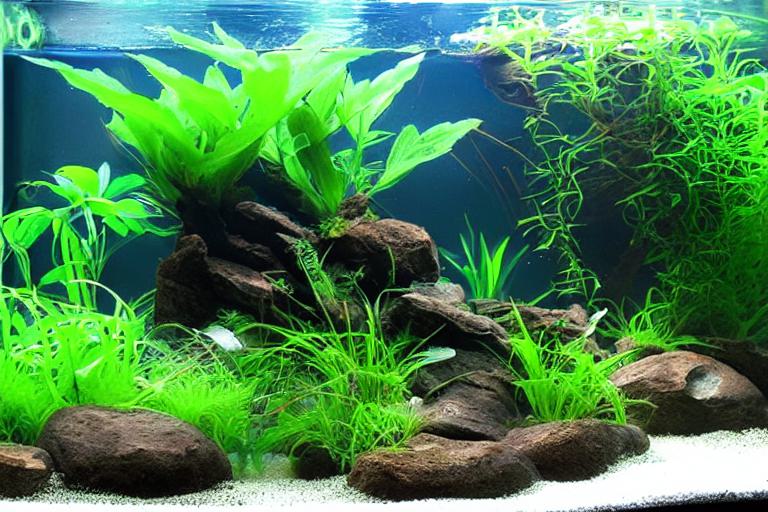Aquariums are a great way to bring a bit of nature into your home, and they can be surprisingly low-maintenance. Planted tanks in particular can be beautiful and relatively easy to care for, as long as you start with the right plants and follow a few simple guidelines. In this article, we’ll show you how to start and maintain a low-tech planted tank.
Aquarium plants that do well in low-tech situations
If you’re looking for aquarium plants that will do well in a low-tech setup, there are a few options to consider. Anubias (Anubias barteri) is another good option, and it’s also relatively easy to care for. Java fern (Microsorum pteropus) is a popular choice for low-tech tanks because it doesn’t require much in the way of care or attention. Both of these plants are slow-growing, so they won’t outpace your tank’s filtration system or overwhelm your other plants.
Another plant to consider for a low-tech aquarium is the crypt (Cryptocoryne sp. ), which is a genus of many different species of plants. They’re also slow-growing, so they won’t take over your tank. Crypts are relatively undemanding and can do well in a wide range of water conditions.
If you’re looking for plants that will thrive in a low-tech aquarium, these are a few good options to consider.

The right fertilization for low-tech planted tanks
And finally, be sure to follow the instructions on the fertilizer package to avoid over- or under-fertilizing your plants. First, it’s important to use a fertilizer that is designed for aquarium plants. Second, you’ll need to figure out how often to fertilize based on the type of plants you have and the size of your tank. When it comes to fertilizing low-tech planted tanks, there are a few things to keep in mind.
If you’re not sure what fertilizer to use, ask your local fish store or a knowledgeable aquarist for recommendations. Once you’ve got the right fertilizer, it’s time to figure out how often to apply it. This will vary depending on the type of plants you have and the size of your tank. As a general rule of thumb, small tanks (10 gallons or less) should be fertilized every two weeks, while larger tanks (20 gallons or more) can go up to four weeks between fertilizations.
When it comes to actually applying the fertilizer, be sure to follow the instructions on the package. Over-fertilizing can be just as harmful to your plants as under-fertilizing, so it’s important to get it right. Once you’ve got a fertilization schedule that works for your plants, stick to it and your low-tech planted tank will thrive.

Choose the right light for a low-tech planted aquarium
The type of light you choose will determine how well your plants grow and how healthy they are. When it comes to low-tech planted aquariums, one of the most important factors is choosing the right light.
Fluorescent lights are the most common type of light used in low-tech planted aquariums. LED lights are becoming more popular as they are more energy-efficient and last longer than fluorescent lights. They are relatively inexpensive and easy to find. There are two main types of light that can be used for low-tech planted aquariums: fluorescent and LED.
Some plants need more light than others. When choosing a light for your low-tech planted aquarium, it is important to consider the intensity of the light. The amount of light your plants need will depend on the type of plants you are growing. If you are not sure how much light your plants need, it is best to err on the side of too much light rather than too little.
For example, blue light is often used to promote growth, while red light is often used to promote blooming. Another factor to consider when choosing a light for your low-tech planted aquarium is the color of the light. Different colors of light can have different effects on plants.
By taking the time to choose the right light, you can ensure that your plants will thrive. No matter what type of light you choose, it is important to make sure that it is the right light for your low-tech planted aquarium.
Low-tech tank filtration
Low-tech tanks are easy to set up and can be very beautiful and rewarding to keep. A low-tech tank is a freshwater aquarium that does not require fancy equipment or chemicals to maintain water quality.
Third, select plants that are well suited for low-tech conditions. First, choose a location that gets plenty of natural light. There are a few things to keep in mind when setting up a low-tech tank. Some good choices include Java fern, Anubias, and Cryptocoryne. Second, use a good quality aquarium gravel and sand to help keep the water clean and provide a place for the plants to root. Aquarium plants need light to grow, so a spot near a window is ideal.
Sponge filters are easy to set up and maintain, and they provide good filtration for a low-tech tank. To filer a low-tech tank, all you need is a simple sponge filter. Be sure to clean the sponge filter regularly to prevent it from becoming clogged.
With a little planning and care, you can enjoy a thriving low-tech aquarium for years to come. A low-tech tank can be a beautiful and easy-to-care-for addition to your home.

Why low-tech planted tanks do not need CO2
These types of tanks rely on natural processes to provide the plants with the nutrients they need. Planted tanks that are low-tech do not need CO2 in order to be successful. Low-tech tanks are a great option for those who do not want to deal with the hassle of setting up and maintaining a CO2 system. The plants in a low-tech tank will typically grow slower than those in a high-tech tank, but they will be just as healthy.
Maintaining a low-tech planted tank: algae and trimming
The best way to control algae is to keep your tank clean and free of debris. Regular water changes and vacuuming of the gravel will help to keep algae in check. Algae will compete with your plants for nutrients and can quickly take over your tank if left unchecked. Algae can be a problem in any aquarium, but it is especially troublesome in planted tanks. Maintaining a low-tech planted tank can be easy with a little bit of care.
By trimming your plants, you remove these algae “hot spots” and help to keep your tank looking clean and tidy. Trimming your plants is also important in maintaining a healthy planted tank. Trimming not only keeps your plants looking their best, but it also helps to control algae growth. Algae will often grow on the leaves of plants that are not trimmed regularly.
Frequently Asked Questions
1.What are the benefits of a low-tech planted tank?
A low-tech planted tank is a great way to get started in the hobby of aquarium plants without a lot of expensive equipment. They are also easier to maintain than high-tech tanks, making them a great choice for beginners.
2.What do I need to get started?
To get started, you will need an aquarium, a filter, a heater, and some plants. You can find all of these items at your local fish store or online.
3.How do I choose the right plants for my tank?
When choosing plants for your tank, it is important to consider the size of your aquarium and the amount of light it receives. There are many different types of plants available, so do some research to find the ones that will best suit your needs.
4.How do I plant my tank?
When planting your tank, it is important to use aquarium-safe soil and to plant the plants in groups. This will help to create a natural-looking environment for your fish.
5.How do I care for my plants?
To care for your plants, you will need to fertilize them and trim them regularly. You can find all of the supplies you need for this at your local fish store or online.
6.What are some common problems with low-tech planted tanks?
One of the most common problems with low-tech planted tanks is algae growth. This can be controlled by using an algae eater, such as a snail or a shrimp. Another common problem is root rot, which can be caused by over-watering or poor drainage.
7.How often should I change the water in my tank?
It is generally recommended that you change the water in your tank every two weeks. This will help to keep your water quality high and prevent algae growth.
8.How do I know if my plants are healthy?
Healthy plants will have bright green leaves and strong roots. If you notice that your plants are turning yellow or brown, or that their leaves are falling off, this is a sign that they are not healthy.
9.What are some common pests that can affect my plants?
Common pests that can affect your plants include aphids, mealybugs, and spider mites. These pests can be controlled with the use of insecticidal soap or other pest control products.
10.Where can I find more information on low-tech planted tanks?
If you are looking for more information on low-tech planted tanks, there are many resources available online and in aquarium books.
Final thoughts
A low-tech planted tank can be a beautiful and rewarding addition to your home, and with a little care and attention, it can be easy to maintain. By following the tips in this guide, you can create and maintain a healthy and thriving low-tech planted tank.
